Most Walkable Neighborhoods in Tokyo
Tokyo is one of the most pedestrian-friendly cities in the world. With its efficient public transportation, compact neighborhoods, and countless convenience stores and cafes around every corner, many areas in Tokyo allow you to live, shop, and relax — all on foot. For those who prefer to explore the city by walking rather than relying on cars or long train rides, choosing a walkable neighborhood is key.
In this guide, we’ll explore Tokyo’s most walkable neighborhoods, highlighting what makes each area ideal for daily life, commuting, and leisure — whether you’re an expat, student, or family.
Why Walkability Matters in Tokyo
Tokyo’s urban design encourages walking. Streets are safe, sidewalks are clean, and there are few major obstacles for pedestrians. However, some neighborhoods are particularly well-suited for those who want to get everywhere on foot.
Here are a few reasons why walkability matters:
-
Convenience: Living close to supermarkets, cafes, parks, and train stations means less time commuting.
-
Health: Walking daily improves physical and mental health.
-
Sustainability: Fewer car trips mean lower emissions and a greener lifestyle.
-
Community: Walkable neighborhoods promote social interaction and a stronger local identity.
Let’s take a look at the top neighborhoods where walking is a joy — not a chore.
1. Daikanyama: Tokyo’s Trendy Walkable Gem
Daikanyama is often called Tokyo’s most stylish village, and for good reason. Its streets are lined with boutique shops, cozy cafés, bakeries, and fashion-forward stores — all within walking distance of Daikanyama Station on the Tokyu Toyoko Line.
What Makes It Walkable
-
Compact layout with tree-lined streets
-
Few high-rise buildings, creating a relaxed, open-air feel
-
T-Site (Tsutaya Books complex), cafes, and restaurants all within a 10-minute radius
Walking Highlights
-
Daikanyama T-Site: A cultural hub combining a stylish bookstore, Starbucks, and event space.
-
Log Road Daikanyama: A repurposed train line turned into a green walking path with cafés and shops.
-
Nakameguro proximity: Only 10 minutes away by foot, expanding your walking options.
Daikanyama offers a “European village” atmosphere right in central Tokyo — perfect for those who enjoy leisurely walks surrounded by creativity and greenery.
2. Nakameguro: Riverside Charm and Lifestyle Convenience
Just next to Daikanyama, Nakameguro blends stylish urban living with natural beauty. The Meguro River, lined with cherry blossom trees, provides one of Tokyo’s best walking routes.
What Makes It Walkable
-
Central station (Nakameguro Station) connecting to Hibiya Line and Toyoko Line
-
Dozens of restaurants, boutiques, and galleries within a short walk
-
Pedestrian-friendly riverside paths
Walking Highlights
-
Meguro River Promenade: Famous for spring cherry blossoms and quiet strolls year-round.
-
Blue Bottle Coffee & Onibus Coffee: Great stops for coffee lovers exploring the area.
-
Access to Daikanyama and Ebisu: 10–15 minutes on foot in either direction.
Nakameguro is ideal for those who want a relaxed, creative, and scenic walking lifestyle with quick access to Shibuya.
3. Ebisu: Walkability Meets Dining and Nightlife
Ebisu, located between Shibuya and Meguro, is one of Tokyo’s most balanced neighborhoods. You can walk to high-end restaurants, Ebisu Garden Place, and local izakaya bars — all within a 10-minute radius.
What Makes It Walkable
-
Compact but vibrant: major attractions are close to the station
-
Wide sidewalks and clean pedestrian routes
-
Mix of modern and traditional establishments
Walking Highlights
-
Ebisu Garden Place: A spacious complex with shopping, restaurants, and Tokyo’s Yebisu Beer Museum.
-
Yebisu Sky Walk: A covered moving walkway connecting the station to the main complex — great in rainy weather.
-
Shibuya and Daikanyama: Reachable in under 20 minutes by foot.
Ebisu is one of the best neighborhoods for those who want everything — food, nightlife, and access — within easy walking distance.
4. Kichijoji: Green Space and Urban Energy Combined
Regularly ranked as Tokyo’s most desirable place to live, Kichijoji blends city convenience with a relaxed suburban vibe. It’s home to Inokashira Park, countless cafés, and small boutiques — all easily walkable from Kichijoji Station.
What Makes It Walkable
-
Centralized station area with everything nearby
-
Safe, wide streets for pedestrians and cyclists
-
Flat terrain — ideal for daily walks
Walking Highlights
-
Inokashira Park: Perfect for morning jogs, picnics, or casual strolls.
-
Sun Road Shopping Arcade: Covered street filled with shops and restaurants.
-
Harmonica Yokocho: A lively alleyway with local eateries and bars.
Kichijoji offers both greenery and convenience, making it perfect for families and young professionals alike.
5. Shimokitazawa: Bohemian and Bicycle-Friendly
Shimokitazawa, affectionately called “Shimokita,” is known for its youthful, bohemian vibe. It’s a paradise for pedestrians thanks to its narrow, car-free streets packed with thrift stores, record shops, and cozy cafés.
What Makes It Walkable
-
Streets designed primarily for pedestrians
-
Compact layout around Shimokitazawa Station
-
Plenty of spots to stop and explore within short distances
Walking Highlights
-
Vintage stores: Explore treasures like New York Joe Exchange or Flamingo.
-
Shimokitazawa Cage & Reload: Trendy outdoor cafés and food stalls.
-
Easy walk to Ikenoue and Setagaya-Daita: Small, artsy neighborhoods nearby.
Shimokitazawa’s relaxed atmosphere and pedestrian focus make it a favorite among artists, students, and expats looking for character and convenience.
6. Jiyugaoka: The European-Style Suburb
Jiyugaoka in Meguro Ward is another pedestrian’s dream, often compared to a small European town. Its elegant streets are filled with patisseries, boutiques, and lifestyle stores.
What Makes It Walkable
-
Centralized shopping and dining area around the station
-
Traffic-calmed streets designed for pedestrians
-
Cozy cafés and parks within short walking distances
Walking Highlights
-
Marie Claire Street: A charming, tree-lined promenade with European flair.
-
Sweets Forest & La Vita: A Venice-inspired mini district with canals and bridges.
-
Komazawa Park: Reachable by foot or a short bike ride.
Jiyugaoka is perfect for those who appreciate walkable elegance, great food, and a slow-paced lifestyle.
7. Aoyama & Omotesando: Stylish and Pedestrian-Friendly
Omotesando and Aoyama are Tokyo’s luxury fashion districts, but they’re also among the city’s most pedestrian-friendly areas. The wide Omotesando Avenue, shaded by zelkova trees, is ideal for walking.
What Makes It Walkable
-
Wide sidewalks designed for strolling
-
Elegant architecture and green urban design
-
Close proximity to Harajuku and Shibuya
Walking Highlights
-
Omotesando Hills: High-end shopping complex with cafés and galleries.
-
Cat Street: A quiet, trendy walking path connecting Shibuya and Harajuku.
-
Nezu Museum Garden: Hidden green oasis in Aoyama.
Omotesando is where urban sophistication meets walkable beauty — perfect for design lovers and flâneurs.
8. Azabu-Juban: Local Feel in the Heart of the City
Azabu-Juban, nestled between Roppongi and Hiroo, retains a charming, small-town atmosphere despite being in central Tokyo. The area’s traditional shopping streets and international community make it easy and enjoyable to explore on foot.
What Makes It Walkable
-
Compact, low-rise streets around the station
-
Mix of traditional shops and global restaurants
-
Central location yet calm environment
Walking Highlights
-
Azabu-Juban Shopping Street: Lined with sweet shops, bakeries, and local vendors.
-
Roppongi Hills: 10–15 minutes away on foot.
-
Arisugawa Park in Hiroo: A beautiful park just a short walk north.
Azabu-Juban is ideal for expats and families who value a local atmosphere with top-tier accessibility.
9. Kagurazaka: Historic Streets and French Influence
Kagurazaka, located near Iidabashi, combines traditional Edo-period charm with European flair. Narrow cobblestone streets wind through restaurants, ryotei (traditional dining houses), and bakeries.
What Makes It Walkable
-
Compact layout with car-restricted alleys
-
Hills and staircases add character to walks
-
Cultural blend of Japanese and French influences
Walking Highlights
-
Zenkokuji Temple: Tranquil temple in the heart of the area.
-
Kagurazaka Dori: Main shopping street with boutiques and sweets shops.
-
French bakeries and cafés: Reflect the local expat community.
Kagurazaka is Tokyo’s hidden gem for slow, cultural walks with a romantic, nostalgic feel.
10. Koenji: Vintage, Music, and Everyday Living
Koenji, west of Shinjuku, is known for its vibrant street culture and secondhand shops. It’s a compact, lively area perfect for pedestrians.
What Makes It Walkable
-
Flat terrain and easy navigation
-
Small streets full of local shops and live music bars
-
Excellent access to central Tokyo via JR Chuo Line
Walking Highlights
-
Koenji Look Street: Main shopping street filled with thrift stores.
-
Live houses and record shops: Cultural staples of the area.
-
Asagaya and Nakano: Reachable by short walks for extended exploring.
Koenji is a great area for creative residents who enjoy discovering something new around every corner.
Final Thoughts: Tokyo on Foot
Walking through Tokyo’s neighborhoods reveals much more than what you’d see from a train window. From the modern sophistication of Omotesando to the laid-back creativity of Shimokitazawa, each walkable area offers its own rhythm, character, and sense of community.
Whether you’re moving to Tokyo or just exploring, choosing a walkable neighborhood means embracing the best of city life — one step at a time.
Most Walkable Areas at a Glance:
| Neighborhood | Key Feature | Walking Highlights |
|---|---|---|
| Daikanyama | Stylish, quiet | Boutique shops, cafes |
| Nakameguro | Scenic riverside | Cherry blossoms, cafes |
| Ebisu | Dining & nightlife | Garden Place, Skywalk |
| Kichijoji | Green and vibrant | Inokashira Park |
| Shimokitazawa | Bohemian | Thrift stores, car-free streets |
| Jiyugaoka | European charm | Patisseries, promenades |
| Omotesando | Elegant | Cat Street, architecture |
| Azabu-Juban | Local & international | Shopping street, parks |
| Kagurazaka | Cultural mix | Cobblestone streets |
| Koenji | Vintage vibe | Music, thrift shops |
What makes a Tokyo neighborhood truly “walkable”?
A walkable Tokyo neighborhood puts daily essentials within a 5–10 minute stroll of a major station: supermarkets, convenience stores, pharmacies, cafés, clinics, banks, and green spaces. It also offers safe sidewalks, frequent pedestrian crossings, relatively calm traffic, and multiple rail or subway lines so longer trips are still easy without a car. Flat terrain helps, but even hilly areas can be walkable when amenities cluster tightly around the station.
Which areas are best for first-time visitors who want to explore on foot?
Daikanyama, Nakameguro, Ebisu, Omotesando/Aoyama, and Shimokitazawa are ideal for newcomers. These districts combine compact street grids with dense clusters of cafés, boutiques, galleries, and parks. You can comfortably wander for hours without needing transit, then hop a single train to reach Shibuya, Shinjuku, or Tokyo Station.
Are Tokyo’s most walkable neighborhoods family-friendly?
Yes. Kichijoji and Jiyugaoka are particularly appealing for families thanks to calm streets, pocket parks, playgrounds, and proximity to larger green spaces like Inokashira Park and Komazawa Olympic Park. Sidewalks are generally stroller-friendly, and essentials like supermarkets and clinics are concentrated near stations.
How do rental prices compare in highly walkable districts?
Expect a “walkability premium.” Central, lifestyle-focused areas (Daikanyama, Omotesando, Ebisu) typically command higher rents for compact units. Slightly farther west along the Chuo or Inokashira lines (Kichijoji, Koenji, Shimokitazawa) can offer better value while staying pedestrian-friendly. Walkability often offsets smaller floor plans by reducing transit time and placing amenities at your door.
Is Tokyo safe for walking at night?
Tokyo is widely regarded as one of the safest large cities globally, and the featured neighborhoods maintain strong evening foot traffic, lighting, and patrols. As in any city, stay aware on quieter side streets late at night, and favor well-lit routes along main shopping arcades or station approaches.
What are the best scenic walking routes in these areas?
Nakameguro’s river promenade is stunning in spring and serene year-round. Daikanyama’s T-Site and Log Road provide leafy, design-forward strolls. Omotesando’s zelkova-lined avenue and Cat Street reward slow window-shopping. In Kichijoji, loop Inokashira Park’s ponds and bridges. Koenji’s covered shotengai (arcades) let you wander in any weather.
How accessible are these neighborhoods by public transit?
All highlighted districts sit on major lines (Tokyu Toyoko, Hibiya, JR Yamanote/Chuo, Odakyu, Keio Inokashira, Ginza/Chiyoda). That means quick, transfer-light access to business hubs and bullet train gateways. Excellent transit complements walkability: you’ll walk locally and ride rail for cross-city trips without needing a car.
Do walkable areas get overcrowded on weekends?
Popular corridors in Omotesando, Nakameguro (especially during cherry blossoms), and Shimokitazawa can be busy on weekends. To avoid crowds, explore side streets parallel to the main avenues, visit early mornings, or plan weekday strolls. Kichijoji’s park disperses foot traffic well, and Koenji’s network of smaller arcades spreads visitors across multiple streets.
What should remote workers look for in a walkable neighborhood?
Seek quiet residential blocks within a 10-minute walk of cafés, coworking spaces, and parks for screen breaks. Reliable fiber internet is common, but proximity to copy/print shops and parcel lockers is practical. Daikanyama, Ebisu, and Aoyama excel for café variety; Kichijoji and Jiyugaoka offer calmer, greener options close to home.
Are there accessible routes for strollers or mobility devices?
Major station approaches, shopping streets, and new developments generally have curb cuts and elevators. Omotesando’s broad sidewalks and Ebisu’s station-to-Garden Place Sky Walk are convenient. Some historic lanes in Kagurazaka are narrow or sloped, so plan routes that follow the main street (Kagurazaka-dori) when smoother surfaces are needed.
What everyday errands can you realistically do on foot?
Most residents in these districts walk to grocery stores, pharmacies, clinics, banks/ATMs, dry cleaners, gyms/yoga studios, cafés, bakeries, bookstores, and parks. Package pickups at convenience stores and parcel lockers reduce the need to travel far. Many restaurants, izakaya, and specialty food shops cluster within a few blocks of the station.
How does seasonality affect walkability?
Spring and autumn are ideal for long walks. In summer, midday heat and humidity can be intense; plan morning or evening strolls and leverage covered arcades (Koenji, Kichijoji’s Sun Road) and shaded avenues (Omotesando). In rainy seasons, station-connected malls and underground passages keep errands manageable without long outdoor stretches.
Can I rely on walking if I work in a different ward?
Yes—combine walking locally with rail for commuting. Choose a walkable home base near a direct line to your office. For example, living near the Toyoko Line (Daikanyama/Nakameguro) streamlines trips to Shibuya and Yokohama; the Chuo Line (Koenji/Kichijoji) speeds rides to Shinjuku and Tokyo Station. Your day-to-day errands remain walkable even if your office is not.
Which area balances nightlife with quiet residential streets?
Ebisu and Nakameguro strike a strong balance: lively dining near the station, quieter residential pockets a few minutes away. Daikanyama offers sophisticated evenings without late-night noise. Koenji’s music scene is energetic around main streets but fades quickly on residential blocks.
Any tips for apartment hunting in walkable districts?
Walk the exact route from potential apartments to the station and to your daily essentials at multiple times of day. Note sidewalk widths, lighting, crossing frequency, and noise. Check proximity to supermarkets, clinics, and parcel lockers. A slightly longer walk (8–12 minutes) on a calmer street may be more livable than a smaller unit on a noisy corner right beside the station.
Bottom line: who will love these walkable Tokyo neighborhoods?
Urban explorers, café hoppers, families who value parks and short errand runs, and professionals who prefer rail plus daily walking over car ownership. If you want dense amenities, design-forward streetscapes, and safe, pleasant routes for morning coffee runs and evening strolls, these districts deliver Tokyo at human scale.

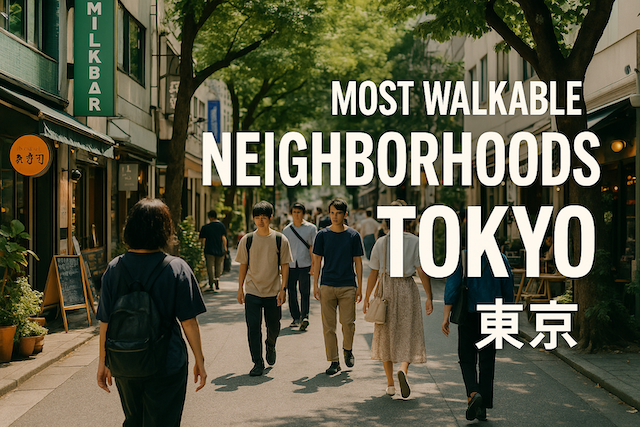
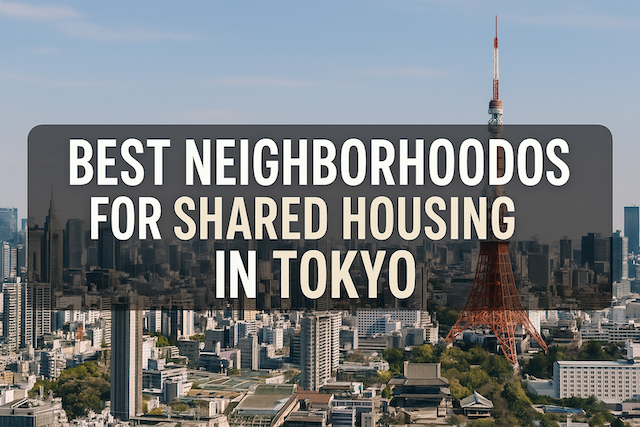
![Where to Live in Tokyo for Expats [2025-2026 Guide]](https://tokyorelocationguide.com/wp-content/uploads/2025/10/ChatGPT-Image-Oct-17-2025-03_50_34-PM.png)
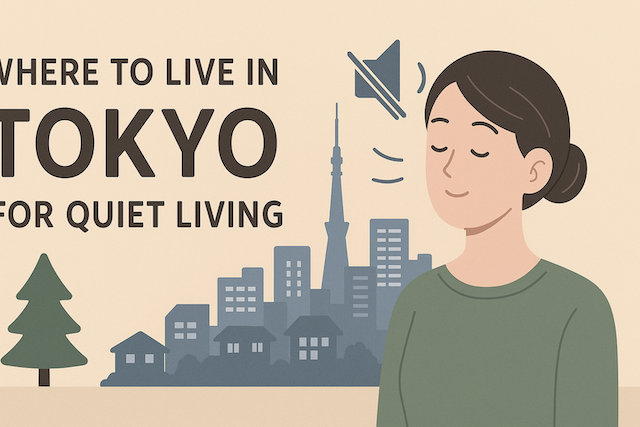
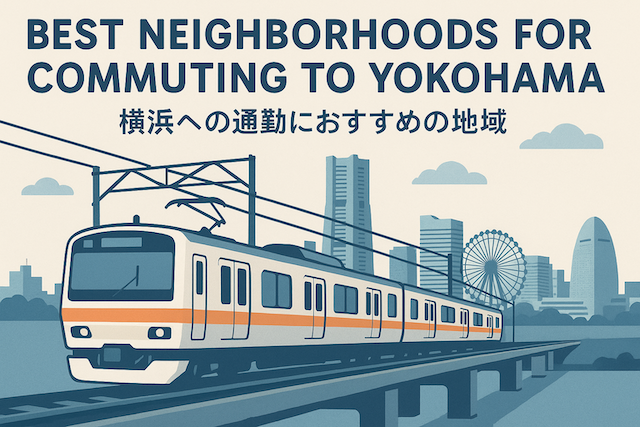
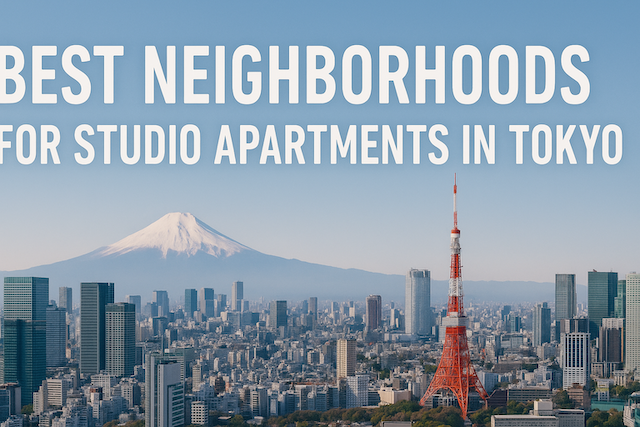
![Where to Live in Tokyo for Singles [2025–2026 Guide]](https://tokyorelocationguide.com/wp-content/uploads/2025/10/ChatGPT-Image-Oct-17-2025-04_03_58-PM.png)